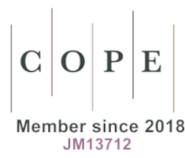Beneficiaries of A Place: Whose Life Is Better?
DOI:
https://doi.org/10.18778/1641-4233.24.02Keywords:
resident, beneficiary, market segmentAbstract
The paper shows relationships between the characteristics of residents and the places, where they live. A combination of three criteria of place attractiveness (retention and attraction, conditions for natural growth, and settling) was chosen to classify places, and profiles of their beneficiaries on the theoretical level. The results of the empirical study partially confirm the developed theoretical typologies. Two methods to segment place market are equal only if expectations of population are constant. Study results allow place marketers to identify emerging shifts in the structure of beneficiaries of specific places and predict their further evolution.
Downloads
References
Ashworth, G. J., and H. Voogd. “Marketing the City: Concepts, Processes and Dutch Applications.” Town Planning Review 59.1. (1988): 65–79.
Google Scholar
DOI: https://doi.org/10.3828/tpr.59.1.9t614v1537652w31
Dokmeci, V., et al. “Residential-location Preferences According to Demographic Characteristics in Istanbul.” Landscape and Urban Planning 48 (2000): 45–55.
Google Scholar
DOI: https://doi.org/10.1016/S0169-2046(99)00080-8
Ge, J., and K. Hokao. “Research on Residential Environmental Evaluation of Local Cities Considering Regional Characteristic and Personal Residential Preference –a Case Study of Saga City, Japan.” J. Environ. Sci. 16.1 (2004): 138–144.
Google Scholar
Kim, T., et al. “Life Cycle and Environmental Factors in Selecting Residential and Job Locations.” Housing Studies 20.3 (2005): 457–473.
Google Scholar
DOI: https://doi.org/10.1080/02673030500062335
Kotler Ph., et al. Marketing Places: Attracting Investment, Industry and Tourism to Cities, States and Nations. New York: The Free Press, 1993.
Google Scholar
Lindberg, E., et al. “Residential-location Preferences across the Life Span.” Journal of Environmental Psychology 12.2 (1992): 187–198.
Google Scholar
DOI: https://doi.org/10.1016/S0272-4944(05)80070-2
Molin, E., et al. “Group-based versus Individual-based Conjoint Preference Models of Residential Preferences: A Comparative Test.” Environment and Planning A 31.11 (1999): 1935–1947.
Google Scholar
DOI: https://doi.org/10.1068/a311935
Niedomysl, T. “Residential Preferences for Interregional Migration in Sweden: Demographic, Socioeconomic, and Geographical Determinants.” Environment and Planning A 40.5 (2008): 1109–1131.
Google Scholar
DOI: https://doi.org/10.1068/a39177
Parker, S., et al. “Class Places and Place Classes Geodemographics and the Spatialization of Class.” Information, Communication and Society 10.6 (2007): 902–921.
Google Scholar
DOI: https://doi.org/10.1080/13691180701751122
Regan, C. L., and S. A. Horn. “To Nature or not to Nature: Associations between Environmental Preferences, Mood States and Demographic factors.” Journal of Environmental Psychology 25.1 (2005): 57–66.
Google Scholar
DOI: https://doi.org/10.1016/j.jenvp.2005.01.001
Rozhkov, K. L. “Segmentation of Inhabitants in Place Marketing: The Case of Karelian Towns.” Higher School of Economics Research Paper No. WP BRP 02/MAN/2012. (2012). Retrieved http://ssrn.com/abstract=2071977
Google Scholar
Rozhkov K. L. Tselevye gruppy, funktsii i izmeriteli rezul’tativnosti vnutrennego marketinga mest (stat’ya) // Problemy sovremennoi ekonomiki 4 (2011): 232–235.
Google Scholar
Stamps III, A. E. “Demographic Effects in Environmental Aesthetics: A Meta-analysis.” Journal of Planning Literature 14.2 (1999): 170–174.
Google Scholar
DOI: https://doi.org/10.1177/08854129922092630
Ulaga, W., et al. “Plant Location and Place Marketing: Understanding the Process from the Business Customer’s Perspective.” Industrial Marketing Management 31.5 (2002): 393–401.
Google Scholar
DOI: https://doi.org/10.1016/S0019-8501(00)00151-6
Van Poll, R. “The Perceived Quality of the Urban Residential Environment: A Multi-attribute Evaluation”. (1997). Retrieved http://www.ub.rug.nl/eldoc/dis/science/h.f.p.m.van.poll
Google Scholar
Walters, W. H. “Assessing the Impact of Place Characteristics on Human Migration: The Importance of Migrants’ Intentions and Enabling Attributes.” Area 32.1 (2000): 119–123.
Google Scholar
DOI: https://doi.org/10.1111/j.1475-4762.2000.tb00121.x
Ward, S. V. Selling Places: The Marketing and Promotion of Towns and Cities 1850–2000. London: Spon Press, 2004.
Google Scholar
Zenker, S. “Who’s your Target? The Creative Class as a Target Group for Place Branding.” Journal of Place Management and Development 2.1 (2009): 23–32.
Google Scholar
DOI: https://doi.org/10.1108/17538330910942771
Zenker, S. et al. “Development and Implementation of the Citizen Satisfaction Index (CSI): Four Basic Factors of Citizens’ Satisfaction.” Research Papers on Marketing and Retailing, 39 (2009): 1–19.
Google Scholar
Рожков К. Л. Целевые группы, функции и измерители результативности внутреннего маркетинга мест (статья)// Проблемы современной экономики, 2011. № 4, cc. 232–235.
Google Scholar
Downloads
Published
How to Cite
Issue
Section
License

This work is licensed under a Creative Commons Attribution-NonCommercial-NoDerivatives 4.0 International License.

















